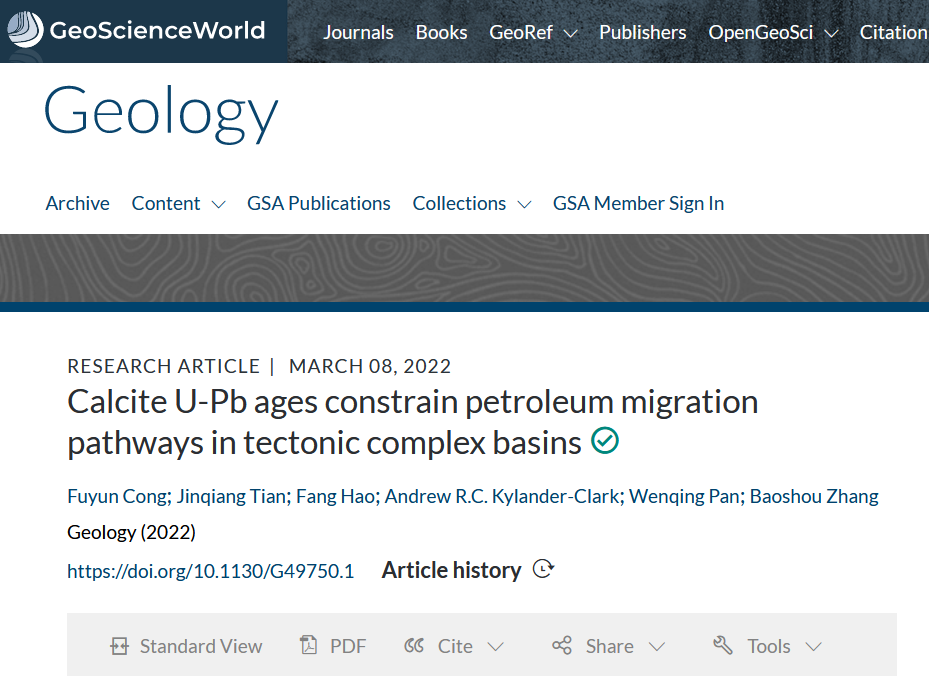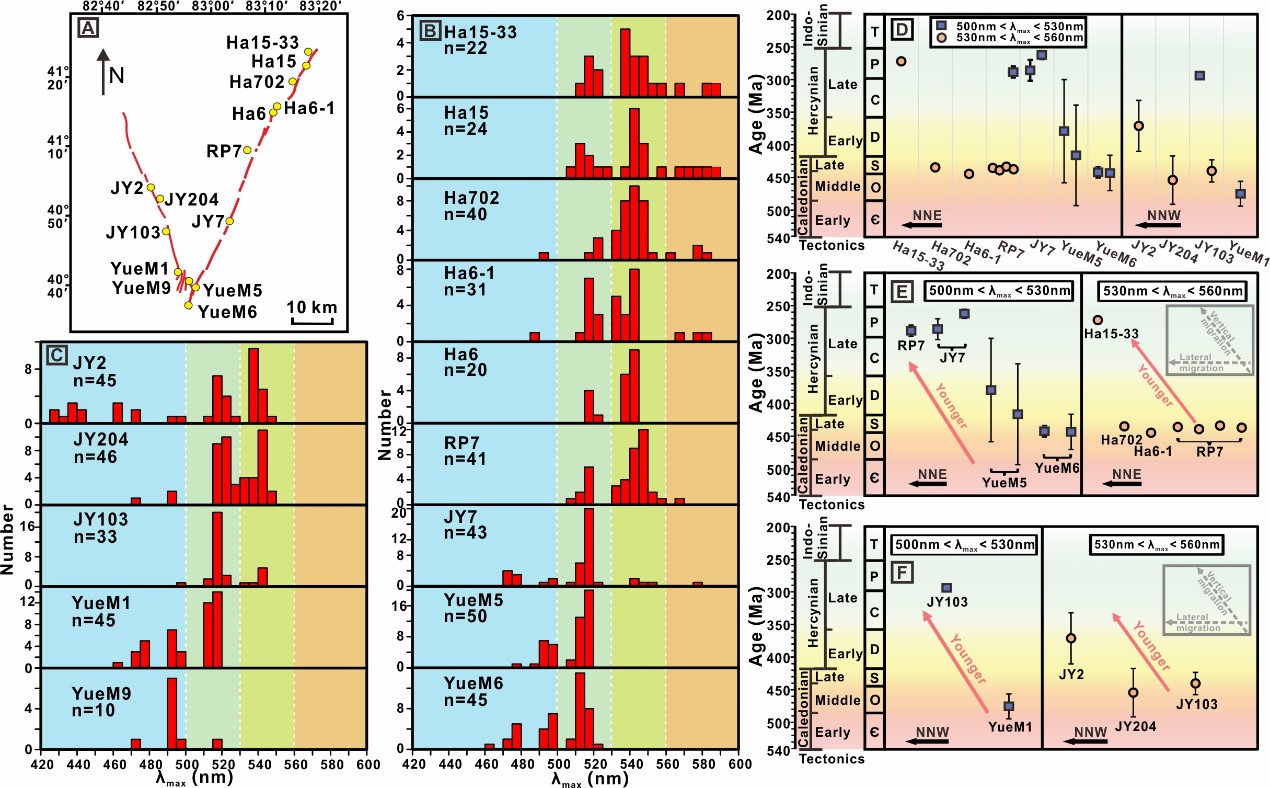Recently, the research team of Professor Hao Fang (Academician of the Chinese Academy of Sciences)in China University of Petroleum (East China) has made important progress in deep hydrocarbon accumulation mechanism, with the paper titled “Calcite U-Pb ages constrain petroleum migration pathways in tectonic complex basins” published in Geology, a top international journal in geoscience. Postdoctoral fellow Cong Fuyun is the first author of the paper, with Professor Tian Jinqiang being the corresponding author, and China University of Petroleum (East China) being the first listed academic institution. This research was jointly funded by the Class A Strategic Priority Research Program of the Chinese Academy of Sciences, Innovative Research Groups of the National Natural Science Foundation of China and PetroChina Major Science and Technology Project.
Tracing petroleum secondary migration pathways is a critical yet controversial subject in petroleum system analysis. Traditional methods, including molecular indicators of crude oil, fluid inclusions and numerical modeling, yield only qualitative or semi-quantitative constraints on identifying the timing and pathways of petroleum migration. Moreover, these tools are not only influenced by multiple factors, but also incapable of distinguishing the relative contribution or importance of lateral (permeable carrier bed) and vertical conduits (faults and fracture systems) during the whole migration process, which restricts their application in hydrocarbon accumulation history analysis, especially for deeply-buried old petroleum systems in tectonic complex basins with multiple petroleum generations, charge/migration pulses and tectonic movements.

The advances in in-situ carbonate U-Pb geochronology via LA-ICPMS has made it possible to provide novel solutions for hydrocarbon migration research. This study systematically collected core samples along two major NNE and NNW-striking faults in the Halahatang oilfield in Tarim basin, used quantitative fluorescence spectra of oil inclusions to accurately distinguish oil charge episodes and applied in-situ calcite U-Pb dating to precisely constrain the absolute timing of each oil charge events. It also analyzed the spatio-temporal discordance of discrete oil charge events in different parts of the faults, and revealed that oil vertical migration from in-situ source rock through (re-)active faults being the main secondary migration pathways in the studied area.
This study is among the first to provide quantitative paradigm to evaluate petroleum migration history. Evaluating the timing, pathway and patterns of hydrocarbon migration under absolute time frame advances the research on hydrocarbon accumulation processes from qualitative, semi-quantitative to quantitative realms, and holdsgreat promise for elucidating petroleum migration and accumulation histories insimilar deep to ultra-deep hydrocarbon systems worldwide.

The reviewers highly recommended the findings and innovation of this research, and believed it would be of high reference and application values in basin fluids migration history reconstruction and hydrocarbon accumulation process analysis, and would receive extensive international attention.
Geologyis a top academic journal in Geosciences, and has been ranked first in the Web of Science Citation Database in Geology for 12 consecutive years.
The research team of Academician Hao Fang has long been devoted to the study of deep oil and gas accumulation in tectonic superimposed basins and the differential enrichment mechanism of shale oil and gas. In recent years, the team has undertaken more than 10 national, provincial and ministerial projects funded by the National Natural Science Foundation of China, the Class A Strategic Priority Research Program of the Chinese Academy of Sciences, the National Key R&D Program, etc., and has won one second-prize National Natural Science Award, one first-prize of National Science and Technology Progress Award , and Two first-prize of Ministerial and Provincial Science and Technology Award, with one academic achievement being selected as one of the top ten Scientific and Technological Advances in Chinese Universities. The team has four authorized national invention patents, has published more than 200 high-level papers in internationally renowned journals including Geology, Earth-Science Reviews, AAPG Bulletin, JGR-Solid Earth, GSA Bulletin, etc., and has made important contributions to the exploration of deep, ultra-deep and shale oil and gas in China.
Link to the web version of the paper:
https://pubs.geoscienceworld.org/gsa/geology/article/doi/10.1130/G49750.1/612418/Calcite-U-Pb-ages-constrain-petroleum-migration
Reviewed by: Xu Xiaoyan, Jiang Shaofei
Updated:2022-03-21